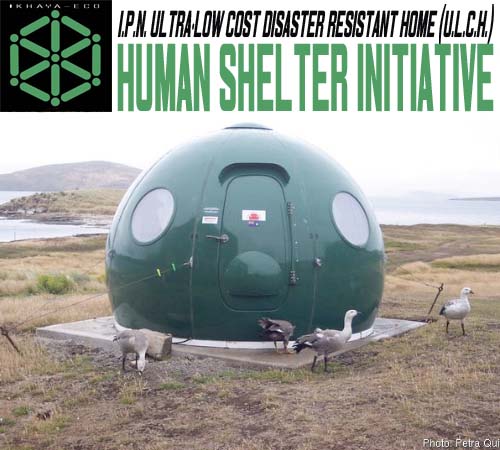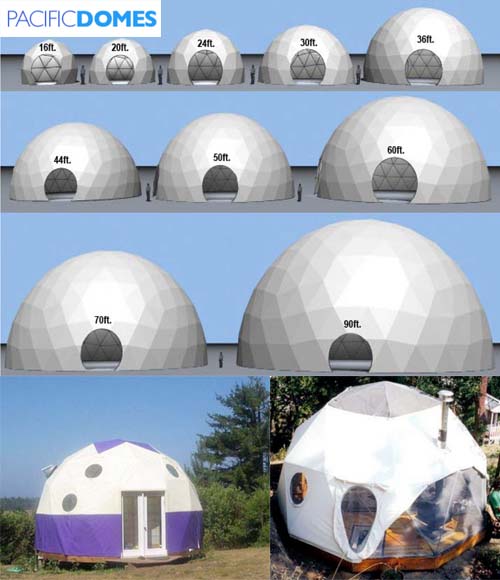
No matter where you are or who you are, the I.P.N. believes that safe shelter is a human right for all who live on our planet. With the technological tools and techniques available to us today, there is no excuse for anyone, anywhere to be without a home.
In addition, it should be inexpensive, highly resistant to hurricanes, floods, tornadoes and many other natural and technological disasters; and manufactured from recycled waste products or locally available material such as the Cal-Earth “Superadobe” home pictured below.

The I.P.N. Ikhaya Eco Human Shelter Initiative (formerly LIfe-O.N.E.) was created to provide the public with information about how to build the most innovative, inexpensive, “green” disaster resistant temporary, portable and permanent homes. Ikhaya-Eco will also introduce its own creations ranging from emergency shelters to portable mini-homes.

These structures can be used as emergency shelters after disasters strike, low cost urban and rural housing, shelter for the rapidly growing homeless population in the USA along with impoverished communities in developing nations across the globe. The Ikhaya-Eco program will place an emphasis on the use of locally available resources and materials to reduce the environmental impact of construction. This includes the use of waste material such as scrap metal, plastic, old tires, wood etc. reconfigured into disaster-resistant structures that can serve as temporary or in many cases permanent shelter. These homes, designed by I.P.N. Executive Director Aton Edwards (and other contributors to the initiative) are also created to serve as what Edwards deems as “ultra low cost homes.” (ULCH) His designs can be built with unskilled labor and range in price from $600 to 12,000 dollars. (plumbing, electric & furniture not included) Many can be disassembled and moved from location to location. Others can be towed by human power (walking, bicycle, handcart) or even carried in a backpack.
Edwards designed the devices to in his words “provide the world’s poorest with the means to protect themselves from the elements and live in dignity.” He adds — “given the volatile state of the American and global economy combined with several other factors, the problem of homelessness will continue to grow. In some cases exponentially. The solutions to this will be the development of practical, non traditional emergency and permanent shelters that are available to all who need them.”
“The need for methods of providing shelter for millions around the world who lack it must be fulfilled or this tragic situation will continue to grow.” The video below describes the Hexayurt, an emergency shelter invented by Vinay Gupta.
The Hexayurt is one of the Ikhaya Eco’s recommended emergency shelter designs.
Geodesic domes are another of the recommended emergency & permanent shelter designs. In terms of simplicity, cost, disaster resistance, construction time, they rank as one of the top, most practical, cost-effective and simple solutions to the emergency-housing crisis around the world.
In summary these are structures created by Walther Bauersfeld chief engineer of the Carl Zeiss & perfected by the late great scientist/mathematician/architect R. Buckminster Fuller.
- Geodesic domes are not only easy and inexpensive to construct, but they are also incredibly disaster resistant.
- Their geometric configuration transfers all loads (weight) equally across the entire shape giving them tremendous strength. Most available today can withstand the strongest hurricane, and even powerful earthquakes.
A number of companies manufacture kits that allow for the rapid construction of these domes. One of the best is Pacific Domes.

Intershelter offers a revolutionary hard shell dome that can be constructed in less than a day!
There are many other innovative and practical designs that Ikhaya-Eco will utilize to present all in need around the world with affordable ultra-low-cost, practical, disaster resistant and environmentally friendly shelter.



More Stories